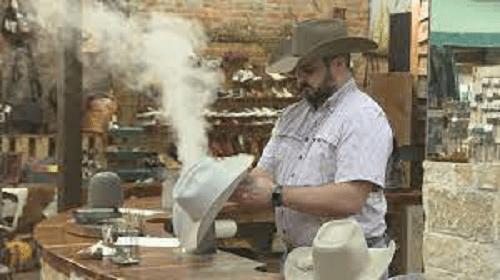1.14.22 – BRYAN, Texas (KBTX)

Businesses of all shapes and sizes have faced many different challenges since the start of the pandemic, but the supply chain issue is the most significant one in their way to start off 2022.
Madhav Pappu is an associate clinical professor in the Department of Information and Operations Management at the Texas A&M Mays Business School. He says a lot of companies are going to start rethinking a lot of what they do within their supply chains if they haven’t already.
“I think that what we are seeing today is going to be with us for a while,” Pappu said.
The global supply chain is having trouble keeping up with soaring demand from consumers and all kinds of complications from suppliers, both stemming in large part from the pandemic. Pappu says disruptions and price hikes are inevitable, but it’s no reason to think the sky is falling.
“This happens, and I think companies are now learning how to manage these things, and they’ll come out on top. I think we are a resilient bunch,” Pappu said. “Yes, these are trying times, but this is not necessarily something to be really worried about. We have the best logistics system on the planet. We spend about 10% of our GDP on logistics activities, inventory management, and warehousing. No other country comes close to us.”
Pappu says companies are undertaking a number of different strategies to adjust to what they’re getting out of the supply chain. One of them, he says, is how they manage their inventory. Many have them have moved to a “just in case” model where businesses have a larger stock of product on hand from the “just in time” model where only what’s needed is easier to get when they need it.
“The ‘just in case’ model came about just because they suddenly saw a little bit of folly in their pursuit of the ‘just in time’ model,” Pappu said. “It’s literally like a pendulum keeps swinging back and forth. There will be some kind of equilibrium found, which eventually is the best place to be. But yes, you are seeing get into the ‘just in case’ system for critical products, and that’ll be there for a while. There is always a need to have a certain amount of inventory for certain components.”
Pappu also says more and more businesses are turning to customization as a means of counteracting issues stemming from supply chain headaches.
“It reduces the amount of wasted product you would have,” Pappu said. “Mass customization tends to reduce all these other side effects of excess inventory.”
Scott Catalena is the general manager at Catalena Hatters in Downtown Bryan. He says supply chain issues have affected them in some fashion in every aspect of their business.
“From straw hats to felt hats to raw material to make hats, along with even boxes and brushes and cleaning supplies and chemicals, and everything that we need on a day-to-day basis,” Catalena said.
Catalena says while sales and their bottom line haven’t really been affected, it has forced them to adapt. He says the most frustrating thing is being unable to tell customers when their orders will be ready.
“We’re having to communicate with that customer a lot more often, and really just adjusting to that and reminding ourselves the new things that we need to do,” Catalena said. “We’ve increased the amount of time and communication that we need per order. Our orders are still coming in, but it gives us problems with keeping the customer in the loop with having such a longer lead time than normal.”
When it comes to implementing some of the strategies Pappu describes, Catalena says they’ve always engaged more in the “just in case” model for inventory even before the pandemic began. But now, he does say they are trying to get more material in they used to.
“I would love to get to the point where we can order more than we need, even more than we’re used to needing,” Catalena said. “But that’s not really an option for us at the moment because with our suppliers, the demand is so high and we have so many orders in line it is ‘send us everything that you can possibly send us as soon as you can.’ Then as soon as we get that stuff, it’s all gone.”
Pappu and Catalena agree finding a way to do things they wouldn’t have thought of otherwise will prove to be a positive.
“I like to think that some of these challenges that we faced and some of these new policies that we have and the way we’ve changed how we do things to adapt might help us in the end,” Catalena said.
Catalena says the future does appear to be bright. He says they’re getting enough of what they need during the most crucial times to keep everything moving.
Pappu says the companies who bring their supply chain partners to the table and build their strategies around them are the ones who will be the most successful in what he calls a “new normal” in the flow of goods and materials.
“Give them a seat at the table and listen to them,” Pappu said. “We’ve lost the art of listening. Those companies that listen are the ones that are going to survive.”
